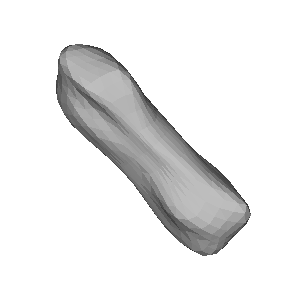2018-11-07 / 4UC 487-041243 / (216) Kleopatra
| # | OBS | Observer | Occ | Meth. | Instr. | CC | TSRC | UT1 | UT2 | UT3 | UT4 | UT2E | UT3E | Dur. | Chrd |
|---|---|---|---|---|---|---|---|---|---|---|---|---|---|---|---|
| 1 | show | Peter Nosal | O+ | CCD | M250 | SK | NTP | 01:16:30.34 | 01:16:36.71 | 0.13 | 0.13 | 6.37 | 66.2 | ||
| 2 | show | J. Srba/P. Svozil | O+ | CCD | M300 | CZ | NTP | 01:15:42 | 01:16:21.9 | 01:16:28.1 | 01:17:10 | 0.1 | 0.1 | 6.20 | 64.5 |
| 3 | show | Petr Zeleny | O+ | VID | M254 | CZ | RAD++ | 01:13:55 | 01:16:22.38 | 01:16:27.33 | 01:19:02 | 0.48 | 0.32 | 4.95 | 51.5 |
| 4 | show | Vaclav Priban | O+ | VID | M300 | CZ | RAD++ | 01:14:34 | 01:16:05.22 | 01:16:09.94 | 01:18:25 | 0.48 | 0.16 | 4.72 | 49.1 |
| 5 | show | Roland Boninsegna | O- | VID | M406 | BE | 01:14:24 | 01:20:16 | |||||||
| 6 | show | O. Schreurs et al | O- | VID | M406 | BE | 01:13:31 | 01:17:51 | |||||||
| 7 | show | Christian Weber | O- | VID | M203 | DE | 01:14:38 | 01:18:00 |
7 observations found in db: euraster
Available (probably) matching predictions (click on the link to switch):| JPL#143 : f6161f9a-97bc-4023-9789-0a2358df1ec4 [db: observed] |
Using prediction f6161f9a-97bc-4023-9789-0a2358df1ec4 for map and profile fit
| Ellipse and circular profile fits to the timings (chords) |
|---|
|
|
Auto-Fit Result: Size = 131 x 88 km a',b' = 65.7, 43.8 km X0,Y0 = -555.7, 70.9 km Mean diameter = 107 km From 4 chords (VID,CCD) You can enter space separated chord numbers (example: 11 4 8) or a method like VIS to ignore all visual timings, or a time source like RAD and NTP (but not GPS). If the plot disappears, then there are less than 2 chords left (too much ignored, go back with browser). Check SiMDA for size and mass data. Check Johnston Archive for satellites. |
Sky projection (artificial light) for occ. time: 2018-11-07, 01:15 UT (JD = 2458429.552)
| DAMIT | Q | P (h) | λ, β | JD0 | JD-JD0 | φ0 | Version | Modified | Vol-equiv D | Cmnt |
|---|---|---|---|---|---|---|---|---|---|---|
| # 1826 | 4.0 | 5.385 | 74°, 20° | 2.44450276914e6 | 13926.8 | 0.0° | None | 2017-06-19 | 124.0 +/- 5.0 km | 2017-06-16 |

Image size: 300px. Transparent image background for copy & paste
| Map with groundtrack and observer stations |
|---|
| Event Details |
|---|
Occultation UUID [and DB] : f6161f9a-97bc-4023-9789-0a2358df1ec4 [observed] Occultation Date + Time : 2018-11-07 at 01:24:04 UT +/- 0.02 min [1] Object Designation : (216) Kleopatra Orbit Class : MBA Star Designation : GDR3 3142070736563525248 Star Coordinates (ICRF) : RA = 07 38 38.3727, DE = +07 15 33.085 [2] Star Magnitudes : G = 12.12 mag, RP = 11.44 mag, BP = 12.65 mag Object Magnitude : V = 11.07 mag Estimated Magnitude Drop : 0.4 mag Estimated Max. Duration : 13.0 sec Object Mean Diameter : 135 km (src: astorb) Speed of the shadow : 10.4 km/s Elongation to Moon & Sun : 103° (sunlit = 0%), Sun = 109° Cross-track uncertainty : 2.0 mas = 2 km = 0.02 path-width (1-sig) RUWE and duplicate source : 0.96 mas, dup.src = 0 (0:false, 1:true) Ephemeris Reference : JPL#143 [1] time t0 of closest geocentric approach c/a, [2] including proper motion until t0 |
| More Data and Informations |
|---|
(If error 404: link not valid which means no data available)
| Aladin Sky Atlas |
|---|
| Aladin Lite direct link (has Gaia overlay) |